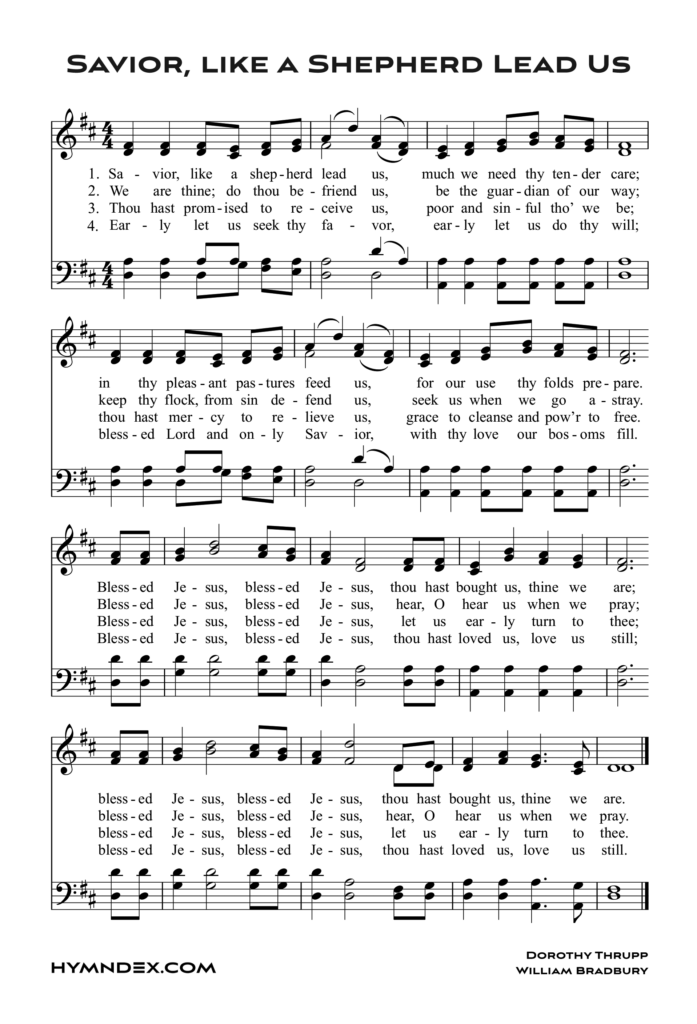The Enduring Legacy of “Savior, Like a Shepherd Lead Us”
“Savior, Like a Shepherd Lead Us” is a beloved hymn that has stood the test of time, appearing in over 1,000 Christian hymnals across denominational lines. Despite its widespread popularity, the origins of this hymn are shrouded in mystery, with little known about its true author or the circumstances surrounding its creation.
The lyrics of “Savior, Like a Shepherd Lead Us” are generally attributed to Dorothy Ann Thrupp (1779-1847), an Englishwoman who compiled several hymnbooks for children. The hymn first appeared unsigned in her collection, Hymns for the Young, published circa 1830 and later in the Fourth Edition in 1836. However, some sources, such as Rev. William Carus Wilson’s magazine The Children’s Friend (June 1838), ascribed the poem to “Lyte,” possibly referring to Henry Francis Lyte (1793-1847). Despite this attribution, British hymnologist J. R. Watson suggests that a stylistic analysis of the vocabulary, rhythm, and content points to Thrupp as the more likely author.
The original words of the hymn were intended for children, with the anonymous writer using the four stanzas to impart a deeply theological message. It wasn’t until more than two decades later that the tune we know today was composed by American musician William Bradbury (1816-1868). Bradbury modified the original words to broaden the meaning and make the hymn more accessible to the entire congregation. Since then, the text has remained largely untouched, a testament to its enduring power and relevance.
The success of “Savior, Like a Shepherd Lead Us” can be attributed to its rich theological content. The hymn encapsulates the essence of a caring Christ who loves all his children, drawing upon biblical imagery such as the Good Shepherd (John 10:1-18) and the lost sheep (Matthew 18:12-14; Luke 15:3-7). It also touches upon the concept of original sin and the salvation message of Christ, reminding us that no one is beyond the reach of God’s love.
The hymn presents a comprehensive picture of the Christian life, from the saving love and grace of God to the call for fellowship and service. Its message of hope, love, salvation, and Christian living has resonated with generations of believers, making it a defining song of the church.
As we sing “Savior, Like a Shepherd Lead Us,” we join our voices with those of the past, present, and future, united in our desire to be guided and loved by our divine Shepherd. Though the origins of this hymn may be obscured by time, its message remains clear and powerful, a testament to the enduring strength of faith and the timeless truths of the Christian journey.



